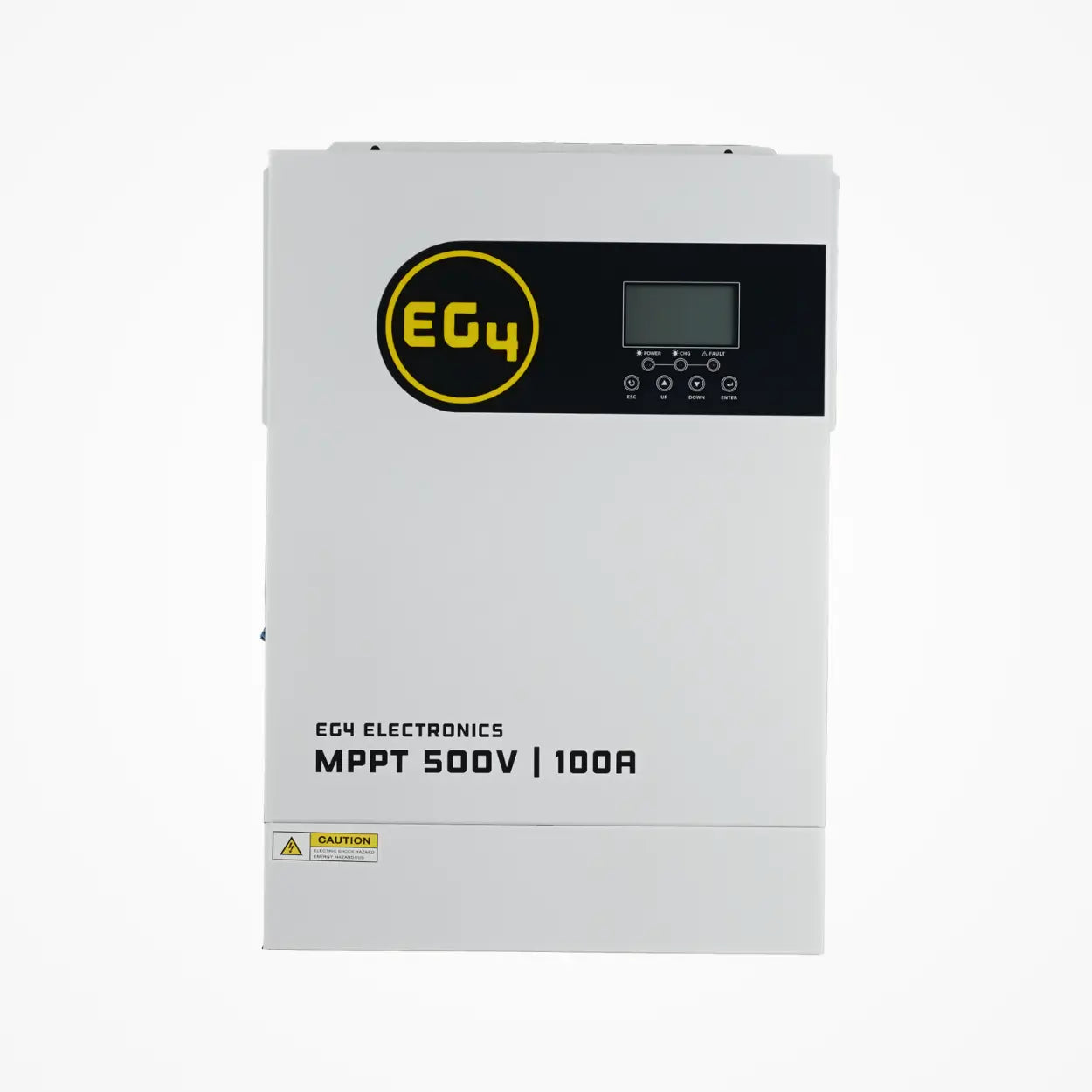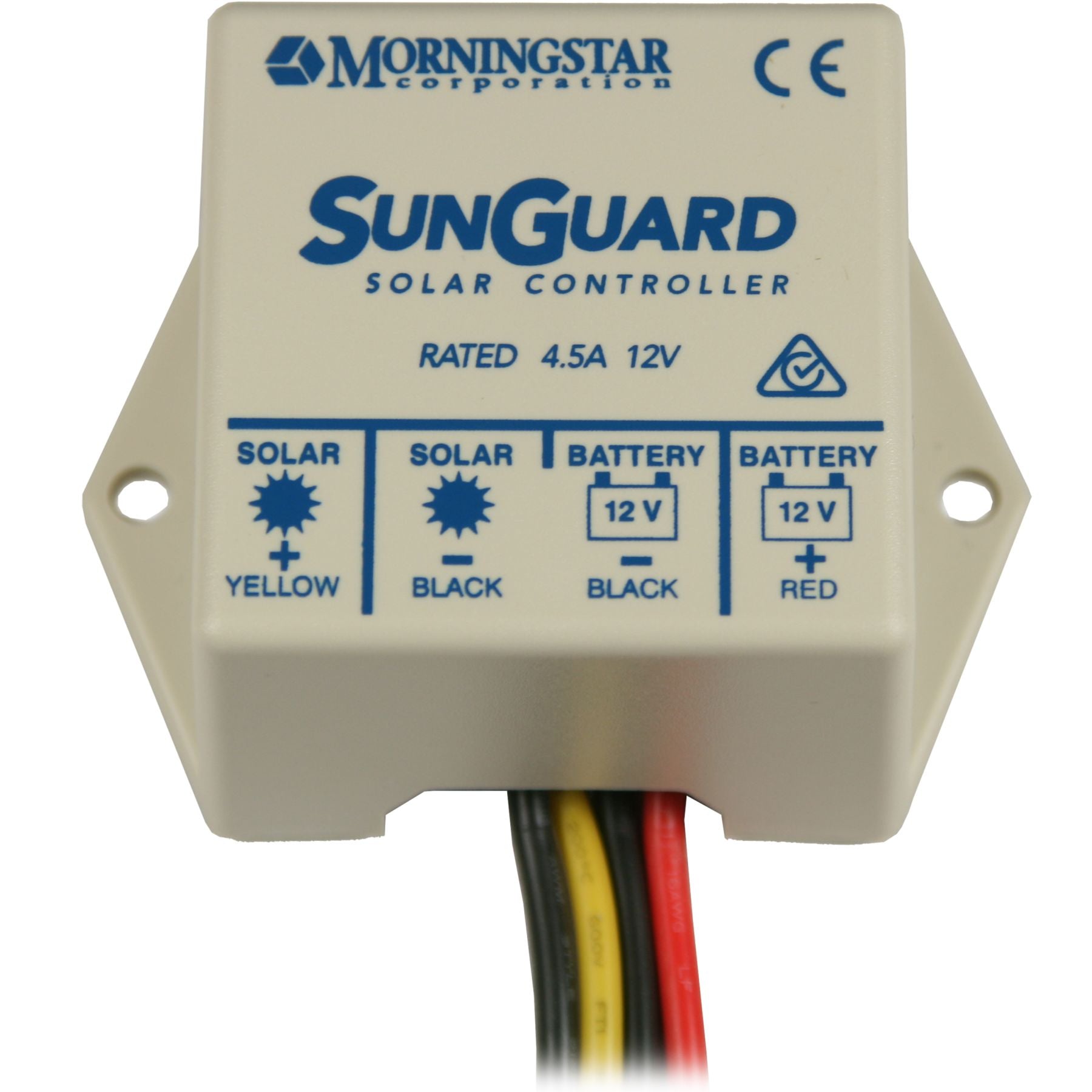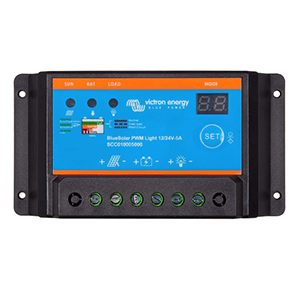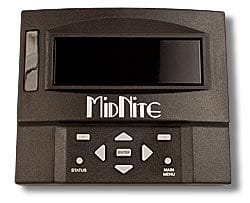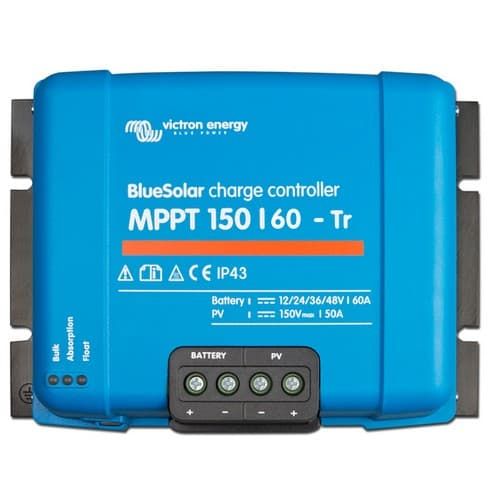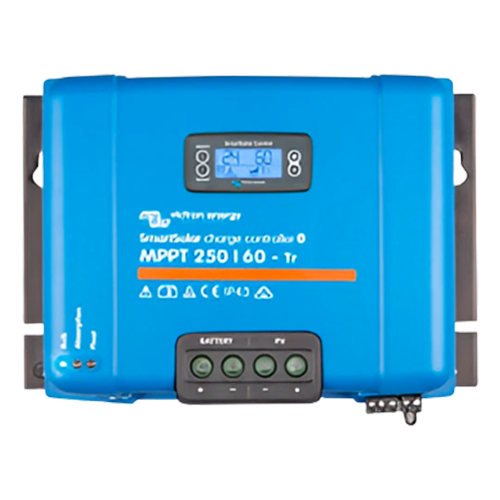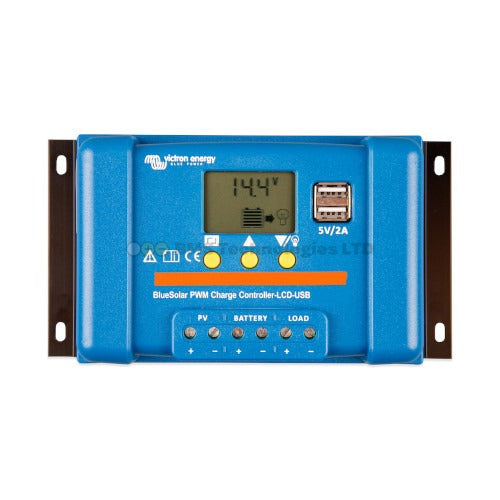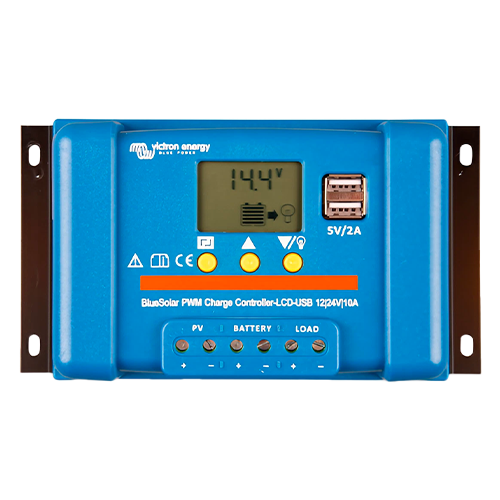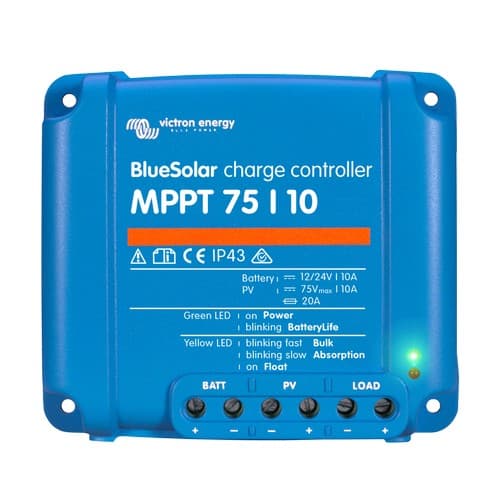Buy Solar Charge Controllers Online
Charge controllers regulate the flow of power from a solar, wind, or hydro source to a battery, preventing overcharging and protecting system components. Depending on the model, they may include features like load disconnects, lighting controls, or diversion functions for redirecting excess energy. Available in capacities from 4 to 80 amps, they can also be combined for larger off‑grid or backup power systems. Selecting the right solar charge controller is essential for protecting your battery bank and maximizing solar efficiency. For those building a complete system, see our Batteries & Accessories range for compatible storage solutions.
Modern controllers use PWM or MPPT technology to improve charging efficiency. PWM maintains batteries at full charge through rapid switching, while MPPT optimizes power harvest by converting higher array voltages into the ideal charging voltage, boosting output by up to 30% and allowing smaller, more cost‑effective wiring. MPPT and PWM controllers come in a variety of amp ratings and voltage options, supporting both 12V and 48V setups. For seamless integration with your solar panel array, explore PV Solar Panels for high-quality modules.
Advanced features like Bluetooth monitoring, app control, and low-voltage disconnect enable precise regulation and real-time system management. For off-grid solar systems, our Off Grid Systems lineup ensures reliable power delivery in remote locations.
Key Capabilities
-
MPPT Technology: Tracks the maximum power point of your PV array, increasing charge efficiency and output, especially in variable lighting conditions.
-
PWM Regulation: Pulse width modulation controllers provide reliable, cost-effective battery charging for smaller solar systems and trickle charge applications.
-
Multi-Voltage Support: Compatible with 12 volts, 24 volts, and 48v battery systems, allowing flexible system design and expansion.
-
Advanced Monitoring: Built-in displays, Bluetooth, and app control options allow you to monitor current, voltage, and the state of the battery in real time.
Ideal For
-
Off-grid solar power system owners seeking to maximize battery life and prevent overcharge or battery damage.
-
RV and mobile solar setups requiring compact, efficient charge controllers, see RV Solar Charge Controllers.
-
Users integrating solar with grid-tied or hybrid inverters for backup and energy management, explore Solar Inverters.
-
Installations needing reliable regulation for lighting or load control, visit Lighting & Generator Controllers.
Quick Spec Comparison Table
|
Product Name |
Amp Rating |
Voltage Range |
MPPT/PWM |
Stand-out Features |
|
Victron Energy Smart Solar MPPT 100/30 |
30A |
12/24/48V |
MPPT |
Bluetooth, app control, 98% efficiency |
|
OutBack FLEXmax 80 MPPT Charge Controller |
80A |
12/24/36/48/60V |
MPPT |
150V input, advanced monitoring |
|
Morningstar SunGuard 12V 4.5A PWM Solar Charge Controller |
4.5A |
12V |
PWM |
Compact size, reliable regulation |
|
MidNite Solar KID Black 30A Marine MPPT Charge Controller |
30A |
12/24V |
MPPT |
Marine rated, built-in display |
|
Blue Sky Energy Solar Boost 3000i MPPT RV Charge Controller |
30A |
12V |
MPPT |
RV optimized, 3-stage charging |






